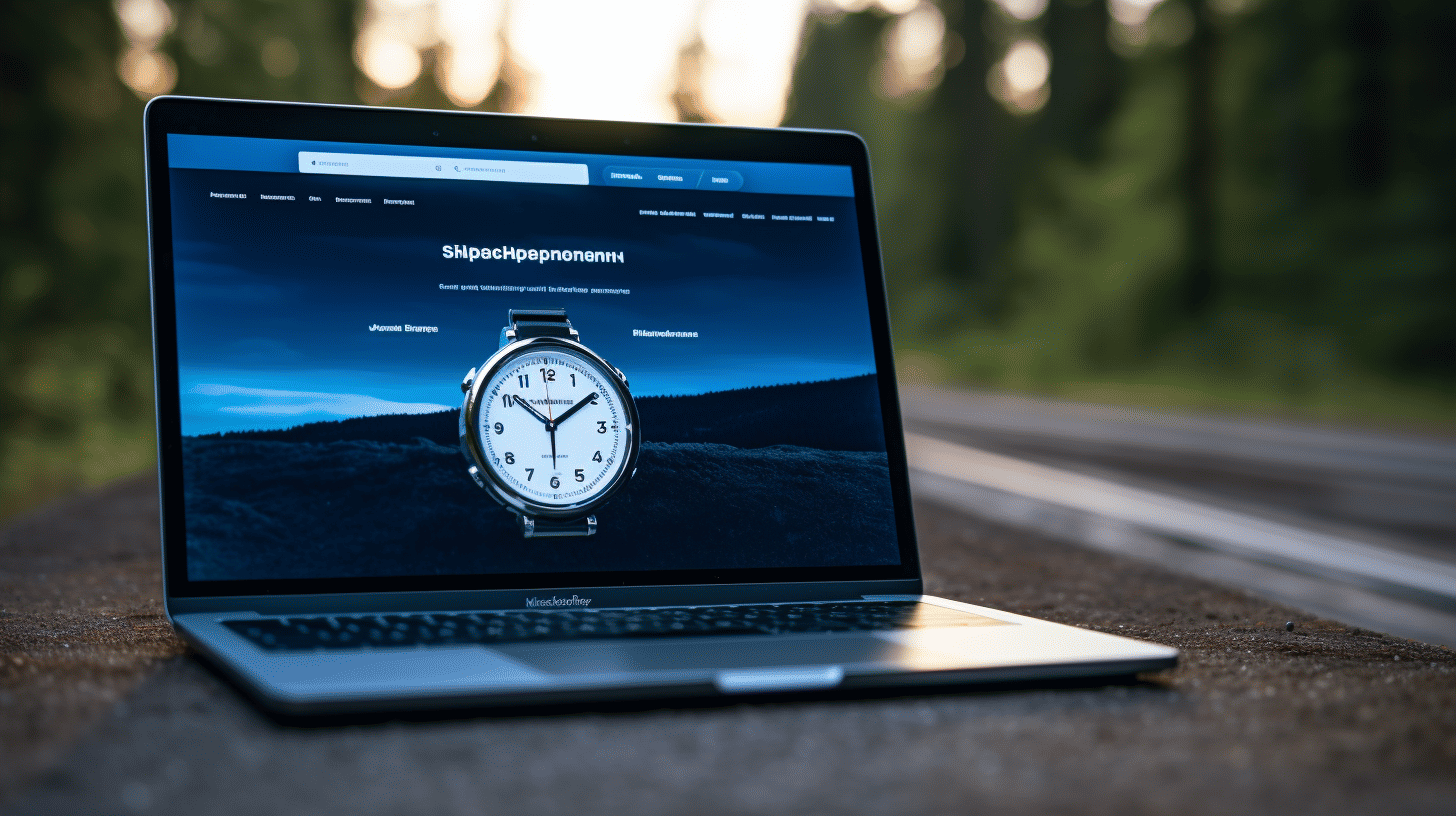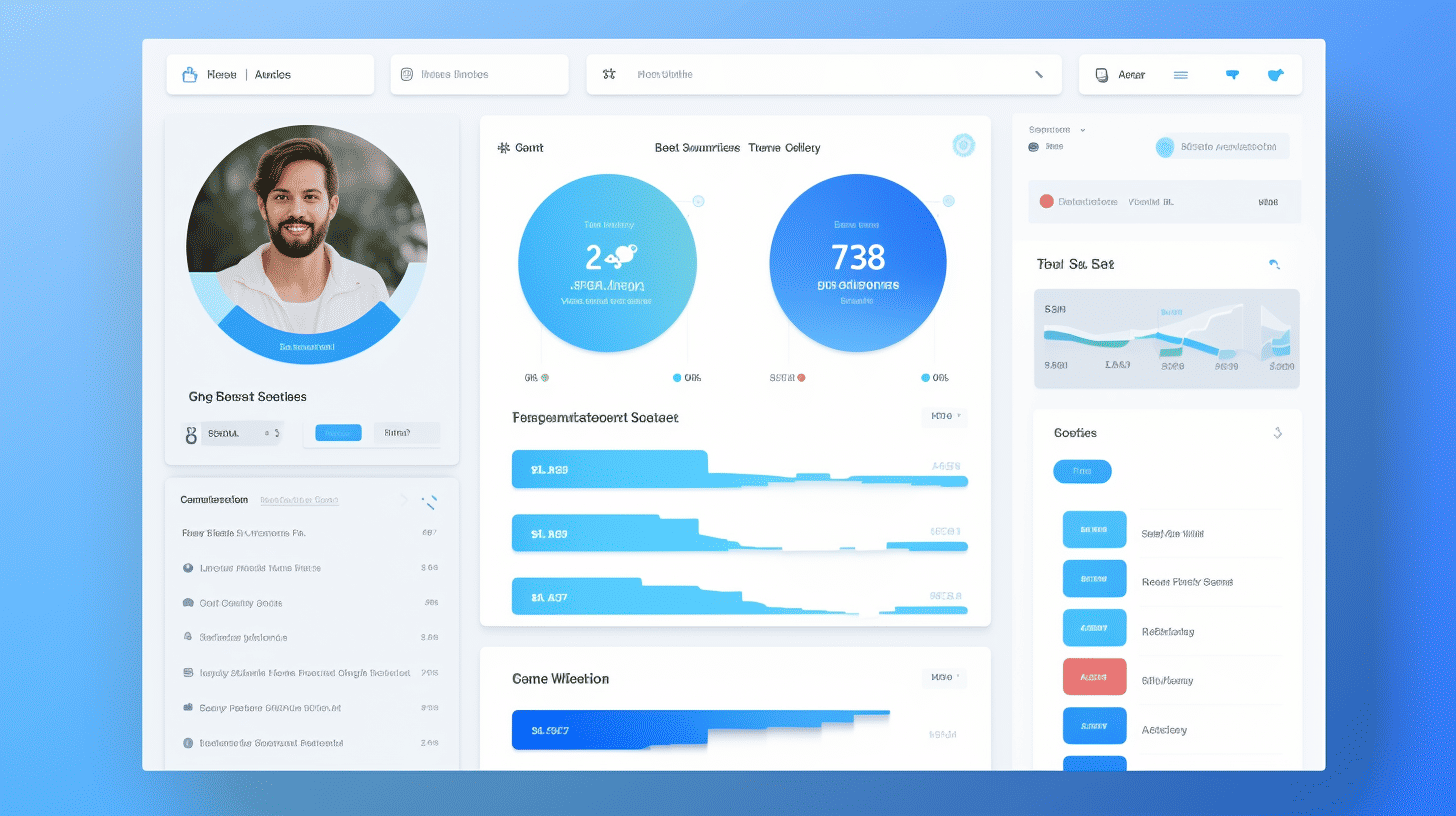As the internet continues to evolve, website users have become more demanding than ever. They expect websites to load quickly and efficiently, providing them with an optimal user experience. Slow-loading websites can be frustrating for users, causing them to abandon a site and seek alternative options.
To meet these ever-increasing user expectations, website owners and developers must prioritize the speed at which their websites load. One popular content management system that often faces the challenge of slow loading speeds is WordPress. With its vast array of features and customizable options, WordPress websites can sometimes suffer from sluggish performance.
In this article, we will explore the importance of fast loading speeds for WordPress websites, the potential causes of slow loading times, and most importantly, how to speed up your WordPress site. By the end of this article, you’ll have a clear understanding of the steps you need to take to ensure your WordPress website is lightning fast.
So let’s dive in and discover the need for speed when it comes to accelerating WordPress website loading. Your users will thank you! 😊
Importance of Fast Loading Speeds
⚡️Did you know that the loading speed of your website can significantly impact user experience, SEO rankings, and conversion rates? It’s true! In today’s fast-paced world, where attention spans are shorter than ever, having a website that loads quickly is crucial for success.
User Experience
⌛️When users visit your website, they expect it to load almost instantaneously. If your website takes too long to load, they are likely to click away and head to a competitor’s site instead. Slow loading times can lead to frustrated users, high bounce rates, and a negative perception of your brand. On the other hand, a fast-loading website provides a seamless and enjoyable user experience, keeping visitors engaged and more likely to explore your content.
SEO Rankings
📈Search engines, like Google, consider loading speed as one of the ranking factors for websites. In fact, Google has made it clear that fast-loading websites are given preference in search results. This means that if your website loads slowly, it not only leads to a poor user experience but also negatively affects your search engine rankings. By improving your loading speed, you can boost your website’s visibility in search results and attract more organic traffic.
Conversion Rates
💰Fast loading speeds also play a crucial role in conversion rates. When visitors have a positive experience on your website, thanks to quick loading times, they are more likely to stay longer, engage with your content, and eventually convert into customers. On the other hand, slow-loading websites increase the risk of visitors abandoning their shopping carts or leaving before completing a desired action, resulting in lost sales opportunities. By optimizing your website’s loading speed, you can significantly improve your conversion rates and maximize your revenue potential.
✨In conclusion, fast loading speeds are essential for ensuring a positive user experience, improving SEO rankings, and increasing conversion rates. Investing in website optimization and regularly monitoring your loading times can go a long way in securing the success of your online presence. Stay ahead of the competition and provide your visitors with a lightning-fast browsing experience – it will pay off in more ways than one!
Causes of Slow WordPress Websites
Is your WordPress website taking forever to load? 🐢 Don’t worry, you’re not alone! Slow websites can be frustrating for both site owners and visitors. In fact, studies have shown that a slow website can lead to higher bounce rates and decreased user satisfaction. So, what’s causing your website to slow down? Let’s explore some common culprits:
Poor Hosting 🏚️
Just like a home’s foundation, the quality of your hosting provider can have a significant impact on your website’s performance. If you’re experiencing slow load times, it could be due to a poor hosting service. Here are a few issues that may arise with subpar hosting:
- Limited server resources: Your hosting provider may allocate limited server resources, resulting in slow loading times when multiple visitors access your website simultaneously.
- Shared hosting: Shared hosting plans, while cost-effective, means you’re sharing server resources with other websites. If one of these websites experiences heavy traffic, it can affect the performance of your own site.
- Server location: The physical distance between your website’s server and your visitors can impact loading times. If your hosting provider’s server is located far away from your target audience, your website may load slowly for them.
To address these issues, consider upgrading to a more reliable hosting provider that offers dedicated resources or a content delivery network (CDN) to ensure optimal performance.
Heavy Images 🖼️
Visual content is an essential component of any website, but large, unoptimized images can be a major burden on load times. If your website contains high-resolution images or images that haven’t been properly compressed, they can take up valuable bandwidth and slow down your site. Here’s what you can do to optimize your images:
- Use image compression plugins: Plugins like Smush or WP-Optimize can automatically compress and optimize your images without sacrificing quality.
- Resize images: Ensure that your images are resized to the appropriate dimensions before uploading them to your WordPress media library. This prevents your website from loading the full-size image and then scaling it down, wasting precious load time.
By optimizing your images, you can significantly reduce page size and improve the loading speed of your website.
How to Speed Up Your WordPress Site
⚡️ Introduction: Why Website Speed Matters
In today’s fast-paced digital world, speed is everything. Users expect websites to load quickly, and slow loading times can significantly impact user experience and site conversion rates. When it comes to WordPress sites, speed is crucial for maintaining and growing online visibility, user engagement, and search engine rankings.
But how can you ensure that your WordPress site is lightning-fast? In this article, we will explore some essential tips and tricks to speed up your WordPress site, helping you provide a seamless and enjoyable browsing experience for your visitors.
Choosing the Right Hosting Service
The hosting service you choose plays a vital role in determining the speed and performance of your WordPress site. Your hosting provider is responsible for storing your website’s files and serving them to visitors’ browsers. If your hosting service is sluggish or unreliable, it can be a major bottleneck for your site’s speed.
Here are some factors to consider when choosing a hosting service for your WordPress site:
- Server Speed and Reliability: Look for a hosting provider that offers fast servers and boasts a reliable uptime record.
- Data Center Location: Select a data center location close to your target audience to minimize latency and ensure faster website loading times.
- Scalability: Ensure that your hosting service can handle your site’s traffic demands, especially during peak usage periods.
- Managed WordPress Hosting: Consider opting for managed WordPress hosting, as these specialized services are optimized for WordPress sites and offer enhanced speed and security features.
For more detailed information on choosing the right hosting service for your WordPress site, check out our guide on Choosing the Right Hosting Service.
Optimizing Your Images
Images are an integral part of most websites, but they can significantly impact your site’s loading speed if not optimized properly. Large image files can slow down your site and increase bandwidth usage. Here are some strategies to optimize your images and improve your WordPress site’s speed:
- Choose the Right Image Format: Use JPEG format for photographs and PNG format for images with fewer colors or transparency.
- Resize and Compress Images: Use image editing tools or plugins to resize and compress images before uploading them to your WordPress site.
- Lazy Loading: Implement lazy loading, which delays the loading of off-screen images until users scroll to them, reducing initial page load time.
- Content Delivery Network (CDN): Consider using a CDN to store and serve your images, taking advantage of their distributed network to deliver images more quickly to visitors.
For a more comprehensive guide on optimizing images for your WordPress site, refer to our article on Optimizing Your Images.
Choosing a Lightweight Theme
The theme you choose for your WordPress site can have a significant impact on its speed and performance. While visually appealing themes may be tempting, they often come with bloated code and unnecessary features that can slow down your site. Opting for lightweight, well-coded themes can help improve your site’s speed. Look for themes that:
- Are designed for speed and performance.
- Have clean and minimalistic code.
- Offer customization options without compromising on speed.
For a list of lightweight and optimized WordPress themes, check out our recommendations in Choosing a Lightweight Theme.
Limiting Your Use of Plugins
Plugins are fantastic for adding functionality to your WordPress site, but it’s crucial to use them judiciously. Installing too many plugins or relying on poorly coded ones can weigh down your site and negatively impact its speed. Here are some tips to keep in mind when working with plugins:
- Evaluate Plugin Necessity: Only install plugins that are essential for your site’s functionality.
- Regularly Review and Remove Unused Plugins: Unused plugins can still impact your site’s speed, so periodically review and remove any plugins that you no longer need.
- Opt for Lightweight Alternatives: Look for plugins that have a smaller footprint and are actively maintained for optimal performance.
For more guidance on managing plugins and optimizing your WordPress site’s speed, refer to our section on Limiting Your Use of Plugins.
With these tips in mind, you can take significant steps to speed up your WordPress site and provide a seamless browsing experience for your visitors. By optimizing your hosting service, images, theme, and plugin usage, you can ensure that your site loads quickly, keeping users engaged and improving your overall online presence. Remember, a faster website not only enhances user experience but also influences your site’s search engine rankings. So, let’s kickstart the process of speeding up your WordPress site and boost your online success!
Tools to Measure Website Speed
In the fast-paced world of online browsing, speed is everything. Users expect websites to load quickly, and slow loading times can be detrimental to the user experience and overall success of a website. Therefore, it’s crucial for website owners and developers to regularly measure and optimize their website speed. But how can you accurately gauge the speed of your website? Enter website speed measurement tools!
Here are four popular and reliable tools that can help you measure your website’s speed:
🚀 Google PageSpeed Insights
When it comes to website speed measurement tools, Google PageSpeed Insights is a go-to option for many developers. This free tool provides a comprehensive analysis of your website’s performance and suggests optimizations to improve speed. It uses a scoring system to rate your website’s speed and provides detailed insights into areas that need improvement.
📊 Pingdom
Pingdom is another popular tool for measuring website speed. It allows you to test your website’s load time from multiple locations around the world, allowing you to assess whether your website is performing well in different geographical regions. Pingdom provides detailed reports that highlight areas of improvement, such as file sizes and load times for individual elements on your website.
📈 GTmetrix
GTmetrix offers a detailed analysis of your website’s speed and performance. This tool assesses various aspects of your website, including page load times, the size of page elements, and how well your website is optimized. GTmetrix provides a performance score for your website and offers recommendations on how to improve its speed.
⏱️ WebPageTest
WebPageTest is a powerful tool that allows you to measure your website’s speed from multiple locations, browsers, and connection speeds. It provides a comprehensive analysis of various performance metrics, including first byte time, start render time, and fully loaded time. WebPageTest also offers waterfall charts to visually depict the loading of different elements on your website.
By regularly using these website speed measurement tools, you can gain valuable insights into your website’s speed performance and make informed decisions to optimize its performance. Whether you choose to use Google PageSpeed Insights, Pingdom, GTmetrix, or WebPageTest, each tool offers unique features and detailed analysis to help you enhance your website’s speed and deliver a seamless browsing experience to your users.
Conclusion
In conclusion, the speed at which your WordPress website loads is crucial for a variety of reasons. Faster loading speeds improve user experience, boost SEO rankings, and increase conversion rates. By addressing the causes of slow websites and implementing strategies to speed up your WordPress site, you can ensure that your visitors have a seamless and enjoyable browsing experience.
Choosing the right hosting service, optimizing your images, selecting a lightweight theme, and limiting the use of plugins are all effective ways to improve the loading speed of your website. Additionally, utilizing tools such as Google PageSpeed Insights, Pingdom, GTmetrix, and WebPageTest can help you measure and analyze your website’s performance.
If you want to take your WordPress website’s speed and performance to the next level, consider Managed-WP.™ This premium managed WordPress cloud hosting platform simplifies infrastructure, offers freedom in digital experiences, and provides expert 24/7/365 problem-solving. With Managed-WP, you can optimize your website’s speed, security, and scalability, allowing you to focus on what matters most – delivering a fantastic user experience.
Remember, a faster website not only keeps your visitors engaged but also helps your business thrive. So take the necessary steps to accelerate your WordPress website loading speed and enjoy the benefits it brings.
Frequently Asked Questions
- Why is website loading speed important?
Website loading speed is important because it directly impacts user experience, search engine rankings, and conversion rates. Slow loading websites lead to high bounce rates and dissatisfied users, while fast-loading websites provide a better user experience and have higher chances of ranking well in search engines.
- How can I check the loading speed of my WordPress website?
There are several online tools available to check the loading speed of your WordPress website. Some popular ones include Google PageSpeed Insights, GTmetrix, Pingdom, and WebPageTest.
- What are some common factors that affect website loading speed?
Common factors that affect website loading speed include server performance, image optimization, caching, minification of CSS and JavaScript files, content delivery network (CDN) usage, and the use of heavy plugins and themes.
- What are some plugins that can help accelerate WordPress website loading?
Some popular plugins that can help accelerate WordPress website loading are W3 Total Cache, WP Super Cache, WP Rocket, Autoptimize, and Smush for image optimization.
- Are there any other techniques to improve WordPress website loading speed?
Yes, apart from plugins, optimizing images, reducing HTTP requests, enabling compression, using a lightweight theme, minimizing external scripts, and leveraging browser caching can also help improve WordPress website loading speed.



















